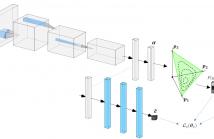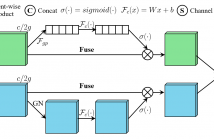
ICASSP 2021 - IEEE International Conference on Acoustics, Speech and Signal Processing is the world’s largest and most comprehensive technical conference focused on signal processing and its applications. The ICASSP 2021 conference will feature world-class presentations by internationally renowned speakers, cutting-edge session topics and provide a fantastic opportunity to network with like-minded professionals from around the world. Visit website.

- Read more about Efficient Real-Time Video Stabilization with A Novel Least Squares Formulation
- Log in to post comments
We present a novel video stabilization algorithm (LSstab) that removes unwanted motions in real-time. LSstab is based on a novel least squares formulation of the smoothing cost function to alleviate the undesirable camera jitter. A recursive least square solver is derived to minimize the smoothing cost function with an O(N) computation complexity. LSstab is evaluated using a suite of publicly available videos against the state of the art video stabilization methods. Results show LSstab reaches comparable or better performance, achieving real-time processing speed when a GPU is used.
- Categories:
 16 Views
16 Views
- Read more about Probabilistic Graph Neural Networks for Traffic Signal Control
- Log in to post comments
Intelligent traffic signal control is crucial for efficient
transportation systems. Recent studies use reinforcement
learning (RL) to coordinate traffic signals and improve traffic
signal cooperation. However, they either design the state of
agents in a heuristic manner or model traffic dynamics in a deterministic way. This work presents a variational graph learning model TSC-GNN (Traffic Signal Control via probabilistic
Graph Neural Networks) to learn the latent representations of
agents and generate Q-value while taking traffic uncertainty
- Categories:
 64 Views
64 Views
- Read more about Deep Weighted MMSE Downlink Beamforming
- Log in to post comments
- Categories:
 11 Views
11 Views
- Read more about Failure Prediction by Confidence Estimation of Uncertainty-Aware Dirichlet Networks
- Log in to post comments
- Categories:
 18 Views
18 Views
- Read more about SA-Net: Shuffle Attention for Deep Convolutional Neural Networks
- Log in to post comments
Attention mechanisms, which enable a neural network to accurately focus on all the relevant elements of the input, have become an essential component to improve the performance of deep neural networks. There are mainly two attention mechanisms widely used in computer vision studies, spatial attention and channel attention, which aim to capture the pixel-level pairwise relationship and channel dependency, respectively. Although fusing them together may achieve better performance than their individual implementations, it will inevitably increase the computational overhead.
poster.pdf
- Categories:
 50 Views
50 Views
- Read more about An Efficient Active Set Algorithm for Covariance Based Joint Data and Activity Detection for Massive Random Access with Massive MIMO
- Log in to post comments
This paper proposes a computationally efficient algorithm to solve the joint data and activity detection problem for massive random access with massive multiple-input multiple-output (MIMO). The BS acquires the active devices and their data by detecting the transmitted preassigned nonorthogonal signature sequences. This paper employs a covariance based approach that formulates the detection problem as a maximum likelihood estimation (MLE) problem.
- Categories:
 22 Views
22 Views
- Read more about Extending the Reverse JPEG Compatibility Attack to Double Compressed Images
- Log in to post comments
- Categories:
 8 Views
8 Views
